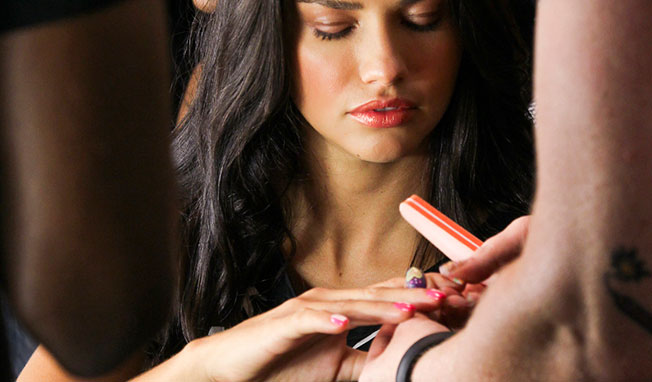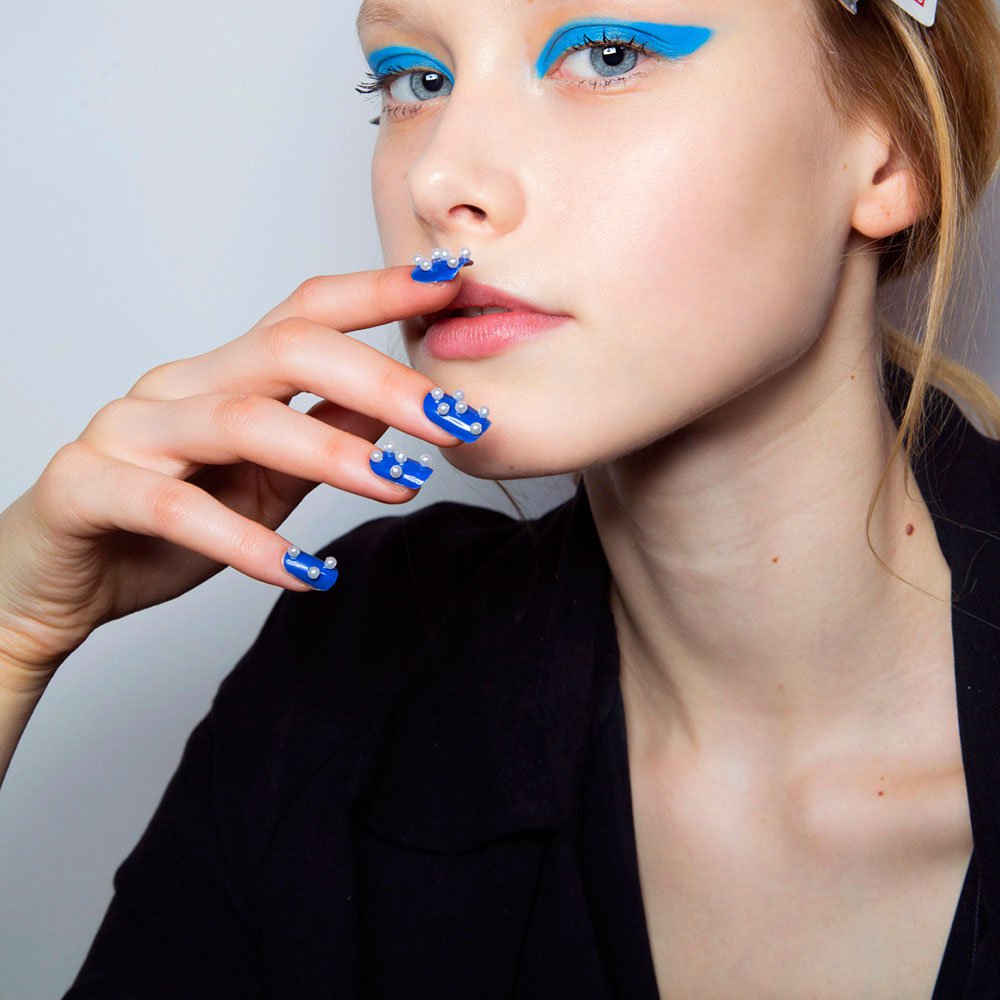If nail polishes are now cleared of most substances known to be toxic, manicure practices have changed. New materials, new techniques would also involve risks for our nails and hands.
- Nails weakened by the laying of the false nails
To apply false nails, one begins by filing or by filing the natural nail, on the top. This thins natural matter and weakens it, which exposes it more to breakage. This weakens the resistance of the nails and also promotes the penetration of certain toxic products, especially used to stick the false nails. Prolonged use of false nails promotes the detachment of the natural nail. Indeed, since the fixation is very strong, it is possible to detach the natural nail, if it is used as a lever, for example, as to open a can. In addition, infections can develop under the false nail, between the dummy product and the natural nail. This is the case, for example, of mycoses, because the natural nail does not breathe. In fact, allergies to products or poorly disinfected instruments. Onychomycosis is particularly contagious and long to treat. This can last from 4 to 18 months, depending on the infected area. There are also cases of eczema, developed on the tip of the nail, due to products based on acrylic.
Other cases of more atypical infections have been recorded, such as pseudomonas, which develop under the false nail. Caused by the stagnation of water, this disease is characterized by a greenish coloring, which can be found under long nails.
When removing the false nails, one is supposed to eliminate all residues of glue, extra strong. For this, the nails are filed in an extremely powerful and violent way, damaging the nails irreversibly. Fragile, natural nails will tend to break and split.

- Increased risk of cancer
Cases of poisoning due to collage products have been identified. Glue vapors acting as alcohol vapors. However, the most worrying phenomenon remains the increased risks of cancers, related to the exposure of the hands and nails to the UV lamps used to fix gel varnishes. According to researchers at the Medical College of Georgia and the Georgia Regents Health System in Augusta, eight semi-permanent veneer sessions increase the risk of skin cancer. Two patients reported cancer on the back of the hand, one was exposed twice a month for 15 years to UV lamps and the other had eight sessions in one year.
Always make sure that your beautician has disinfected his instruments before practicing your manicure. In some cases, some unsterilized instruments may have been able to carry serious infections, such as hepatitis C. On the other hand, it is not advisable to let oneself be used when you want to cut your cuticles with the forceps. They can be repelled but cut them fragile and unbalanced, exposing you to all kinds of infections.

- Relax ! The house manicure remains safe
If there are certain risks associated with repeated manicures, it is necessary to relativize. These risks are minimal and you apply varnish every week, quietly installed in your sofa, should not expose your hands to all dangers. Take care of your nails and let them breathe between two manicures! As for the image, make sure to make regular movements and in the same direction, not to split your nails. The only real risk of your daily manicure is to spill your bottle or paint more of your fingertips than your nails. Nothing irreversible (except perhaps for the carpet of the living room!).


